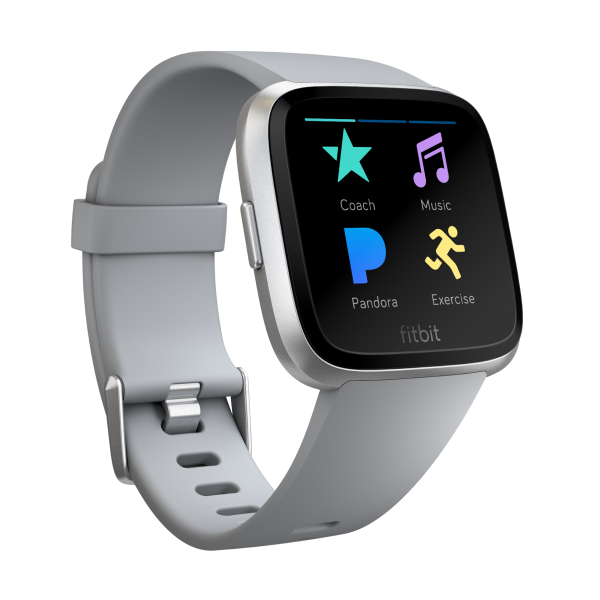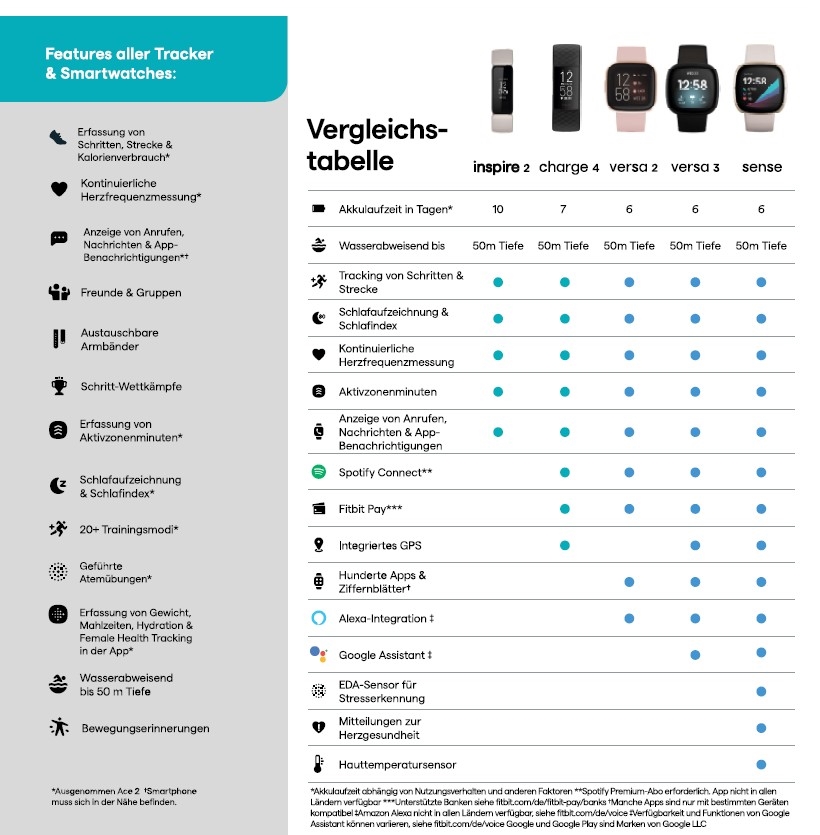

To use the EDA scanner, swipe over to the EDA tab and start a session, in which you will hold the sensors (on the sides of the screen) between your fingers for three minutes.

#Compare fitbit charge 5 and versa 2 skin#
These EDA sensors measure electrical changes in your skin that can indicate how stressed you are. The Charge 5 also has electrodermal activity (EDA) sensors that can help you track your stress levels. Though this isn’t a diagnostic tool, frequent spikes in oxygen variation could indicate breathing disturbances during your sleep you may want to talk to a doctor about. Aside from monitoring the sleep stages (awake, light, deep, and REM), the Charge 5 keeps tabs on your heart rate, restlessness, and estimated oxygen variation (the changes in your blood oxygen saturation). We found Fitbit’s sleep tracking accurate, and it comes with some extra bells and whistles users might find interesting. For example, stretches of your route where your heart rate was in a lower zone are marked in yellow, but sections where your heart rate increased are marked in orange and red accordingly. In the Fitbit app, you can later view your route and your heart rate and pace on the map so you can see where they increased and decreased along your run, walk, or bike ride. That said, wrist heart rate will never be as accurate as the heart rate recorded from a chest strap, so if you must track your pulse for medical reasons, it’s best not to rely on the Charge 5.

They helped me push myself into the next heart rate zone during intense periods and gauge when my heart rate finally settled during recovery. I used these notifications during a HIIT cycling class. You can also monitor your heart rate throughout your workout by turning on the heart rate zone alerts. While exercising, you can view information such as your average pace, distance traveled, calories burned, active zone minutes and more on your tracker. We found the Charge 5 to accurately estimate where activity began and adjust the distance traveled. However, you don't need to wait for the GPS before taking off. If you don’t have your phone, the GPS takes longer to connect-about 15 to 20 seconds. If you have your phone with you, the GPS takes only seconds to connect, and we didn’t experience any connectivity issues during the testing process. To record a walking, running, or cycling workout, swipe on the home screen to the exercise tab, select which activity you want to complete, and tap the start button. Thanks to the tracker's exercise shortcuts, the built-in GPS is easy to use. It’s easy to scroll through and responsive to touch. Its screen is twice as bright as the Charge 4’s and has an “always on” display option, which makes it easy to read outside in the sun. It’s comfortable to wear both lounging and exercising. The Charge 5 is slightly smaller than its predecessor and our top pick, the Charge 4 (10% thinner, according to Fitbit). This makes it a great pick for those who prefer looking at their information on their wrist instead of an app. With the Charge 5, you get a plethora of fitness tracking features like 24/7 heart rate monitoring, summarized sleep data, exercise statistics, and stress tracking all at your fingertips. Still, it has a screen large enough to comfortably swipe through your stats on the device. It’s small enough to satisfy those who prefer the size of a fitness tracker over a smartwatch. Easy to use, comfortable to wear, and jam-packed with health-tracking features, the Fitbit Charge 5 is our favorite fitness tracker.


 0 kommentar(er)
0 kommentar(er)
